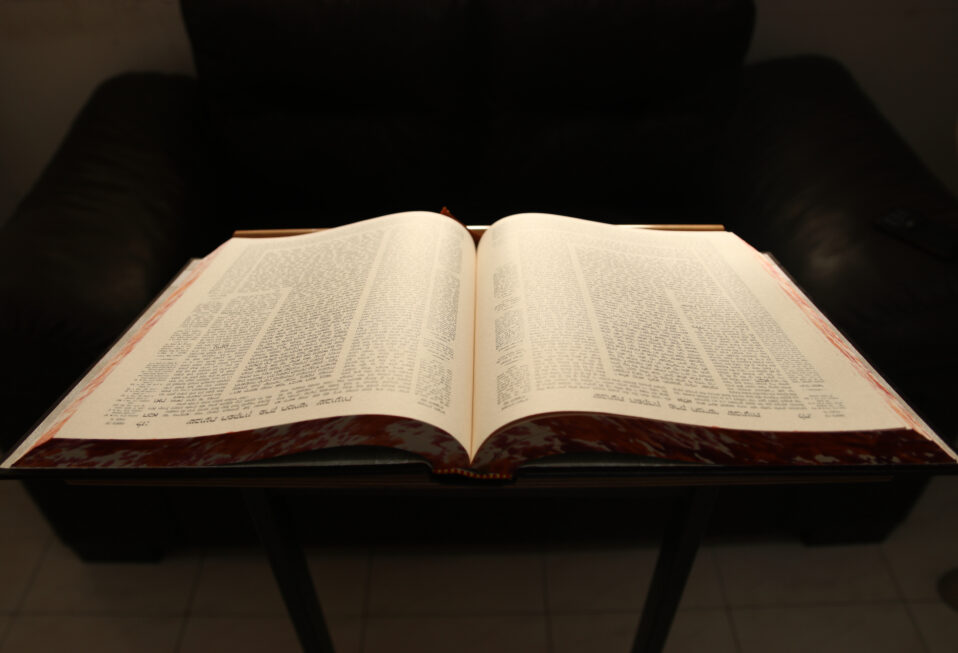The Talmud refers to the expansive commentary which developed around the Mishnah in the centuries following the collection and editing of the Mishnah. There are two Talmuds, the Jerusalem Talmud and Babylonian Talmud. The Talmud consists of two parts: the Mishnah and the expansive commentary on the Mishnah known as the Gemara.
The Jerusalem Talmud—often referred as the Yerushalmi—follows the Mishnah’s organization down to the chapter level. However, the Yerushalmi lacks certain Mishnaic tractates (chapters); thus, it is incomplete. The Yerushalmi cites Sages who lived between A.D. 200-400. The main collection and editing of the Yerushalmi occurred within the land of Israel, most of it taking place in Tiberias on the shore of the Sea of Galilee. The language of the Yerushalmi is both Galilean Aramaic and rabbinic Hebrew.
The Babylonian Talmud is the longest literary work produced in Late Antiquity (roughly 6,000 pages in standard printed editions). It provides a full expansive commentary on the Mishnah. Like the Yerushalmi, the Babylonian Talmud includes the Mishnaic text and Gemara. Its size and thoroughness made the Babylonian Talmud the crowning accomplishment of rabbinic Judaism and the most important source of Jewish religious instruction.
The Babylonian Talmud follows the organization of the Mishnah, but the Mishnaic sayings often follow a different order than the Mishnah. The Babylonian Talmud was composed primarily in Babylon; thus, outside the land of Israel. Like the Mishnah and Yerushalmi, the Babylonian Talmud underwent a period of editing and collecting, until it came to its final form sometime in the 6th-8th centuries A.D. It preserves many sayings in Mishnaic Hebrew, but the anonymous glue which holds it together is in Babylonian Aramaic.
Both Talmuds cite sayings which go back to Sages from the time of the Mishnah but are not contained in the Mishnah. These sayings are referred to as baraitot. They provide important additional ancient opinions and sayings from earlier Sages. The Yerushalmi and Babylonian Talmud contain sayings ascribed to Sages as well as anonymous sayings.
The Talmud contains legal material, like the Mishnah. It also contains material derived from Scriptural interpretations, parables, and narrative stories, which are not as plentiful within the Mishnah.
The Talmud was composed much later than the New Testament. Due to its lateness by comparison, some scholars doubt its value for helping us to understand the world of ancient Judaism of which Jesus and the New Testament were a part.
Yet, when we account for the forces which shaped its composition, the oral nature of Judaism and its ability to transmit sayings, interpretations of Scriptures, and instructions, the Talmud can shed light into the world of Jesus. For example, apart from the Gospels, on the lips of Jesus, story parables only appear in rabbinic literature, like the Talmud. Therefore, they have merit in helping us to understand Jesus’ most common manner of teaching.
Marc Turnage is President/CEO of Biblical Expeditions. He is an authority on ancient Judaism and Christian origins. He has published widely for both academic and popular audiences. His most recent book, Windows into the Bible, was named by Outreach Magazine as one of its top 100 Christian living resources. Marc is a widely sought-after speaker and a gifted teacher. He has been guiding groups to the lands of the Bible—Israel, Jordan, Egypt, Turkey, Greece, and Italy—for over twenty years.
Website: WITBUniversity.com
Facebook: @witbuniversity
Podcast: Windows into the Bible Podcast




Post a comment